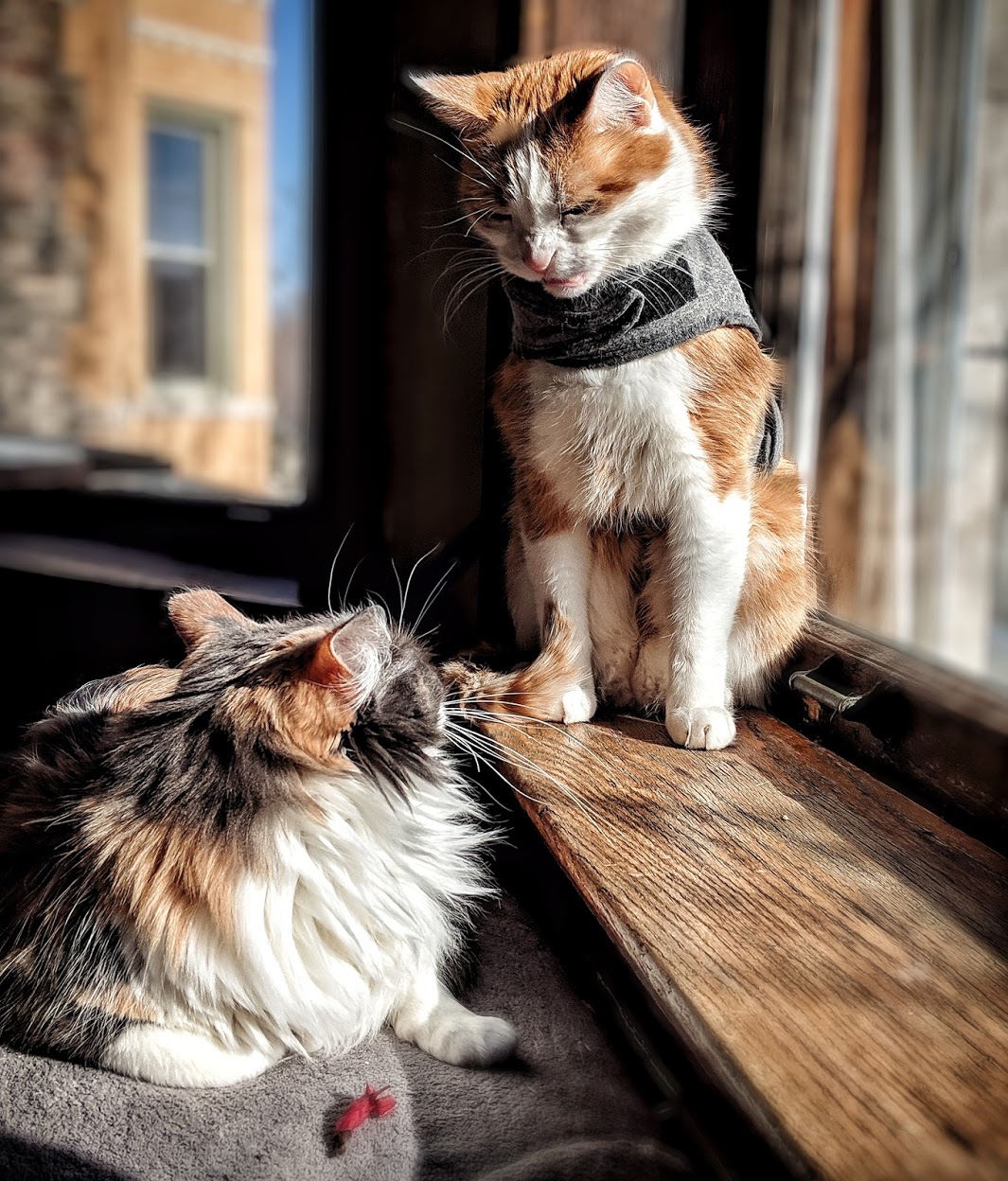Cat Petting 101: Avoid Overstimulation
Schedule A Consultation
One of the best parts of owning a cat is petting their soft, soft fur. If you ask me, you haven’t LIVED until you’ve buried your face in that forbidden belly fluff! Though most cats appreciate a few soft strokes now and then and some may even enjoy a full-body rub down, for many cats the experience may be completely different, even unpleasant. Let’s take a look at why this happens and how to make sure you and the cats you pet enjoy this bond-strengthening activity!
Why do cats get overstimulated?
Cats are very sensitive creatures and will become overstimulated by too much petting, regardless of how much they enjoy it. Some cats are overstimulated much more easily than others and may even react violently if touched in the wrong way. Though many folks think of it as a behavioral issue, this response has nothing to do with personality or temperament!
Overstimulation is a physiological response to either excessive petting or other sources of frustration and anxiety which causes a build-up of emotion that the cat cannot control. Because cats do not have full control over their environment and cannot understand the causes of their overstimulation anyway, it’s up to us to notice the signs and help them to avoid it in the first place
What are the warning signs of overstimulation?
A cat who is becoming overstimulated will often show some very clear body language to let you know you should back off and let them cool down
Twitching or wagging tail - A relaxed cat will sometimes slowly wave the tip of their tail back and forth, but if that wave turns to a fast swishing or if it goes into a full wag, you better back off!
Skin Twitching - Let’s just say that twitching of any kind is a bad thing. Cats twitch their back skin when they are nervous or irritated
Ears turning back - Unless your cat just heard an interesting sound behind them, this will usually indicate they are about to pet you back, except with sharp little blades instead of soft peets
Quickly turning their head towards your hand - If this happens it’s a 50/50 chance they are going to lick your hand to thank you or bite your finger off. If there are no other signs of overstimulation and your cat is not known for biting, I wouldn’t worry. I guess if your finger is super important to you, maybe worry a little
Keeping your cat busy with regular, interactive play is the best way to relieve some of that excess energy and lower the chances of them becoming overstimulated. If your cat is frequently overstimulated or is anxious in general, they may need a little extra help remaining calm, such as a thunder shirt or some medication from your vet
So How do I pet a new cat?
You’re at your friend’s house under the guise of attending a party, but I know why you’re really here… you gotta pet that dang cat! Before you jump right in though, treat them with some respect and introduce yourself!
Unless your new pal runs right up to you and slams their head into your hand, it’s best to present them with a personal item to sniff first. A shoe, eyeglasses, purse, pants (kidding), whatever. Set the item down and back away. Once they have had the opportunity to sniff the item, make eye contact with them, immediately slow blink while turning your head to the side, breaking eye contact. This is to show them you’re relaxed and not a threat. If they return the blink, you’re ready to rumble
Get on their level or lower and approach them with your hand from the side, not from above. If they show any signs of fear or aggression upon approach, back off and wait a bit. Ignore them and talk to another human (ugh, I know) so they get used to your voice or just relax nearby. Show them you aren’t a threat and they will likely come to you eventually
just tell me how TO TOUCH IT PLZ!
Okay, I get it, you’re ready to pet that thing until its fur falls off, but there are a few more things you need to learn first!
Though each cat has their own petting preferences, most will enjoy being touched on their cheeks, forehead, and back of the neck, and pretty much all of them LOVE a good chin scratching
Let the cat drive - First, try extending a curled index finger for them to sniff and rub their mouth on, but don’t move your hand right away. Instead, remain still and allow them to guide your finger along their body. If they only seem to want to rub it on their face, follow that instruction and stick to the face. If they rub your hand down their entire body, they may be open to full-body petting
Start with a light touch and feel the cat’s response. They will usually lean into it if they want a bit more pressure, but feel free to experiment a bit! Just keep in mind that cats are not like dogs and will typically not respond to rough petting or patting of any kind
If you’re determined to try a full-body pet, start at the head and finish at the shoulder blades. If there are no signs of overstimulation, start again at the head and stroke all the way to the tip of the tail, checking for twitching or tail wagging after. Never pull a cat’s tail whether they like it or not, it can cause severe nerve damage or even paralysis
Only pet in the direction of fur growth. I know it’s cute to give them Sugar Ray hair or whatever, but cats do not like adventurous haircuts as much as I do
THE BELLY IS A TRAP - Though there are cats who enjoy a belly rub now and then, including a few of my own, keep in mind that an exposed belly is a display of trust, and touching that sweet, fluffy belly can be seen as an act of aggression that will almost certainly result in a bear-trap maneuver and can even make your cutie lose a bit of trust in you
End on a high note - This is the most important lesson of any interaction with your cat. If they show any signs of overstimulation when you are petting them, then take note of that and don’t pet them so long next time. They will appreciate you respecting their boundaries and will be much more likely to allow you all the future petting your heart desires
All cats and situations are unique, so if these tips don’t work for you or if you have any other cat behavioral or wellness concerns, I’d love to help you! Please contact me or book an appointment for personalized guidance and support
Have a story you’d like to share, questions about this article, or a completely different behavioral issue that I haven’t addressed? Let me know in the comments!


